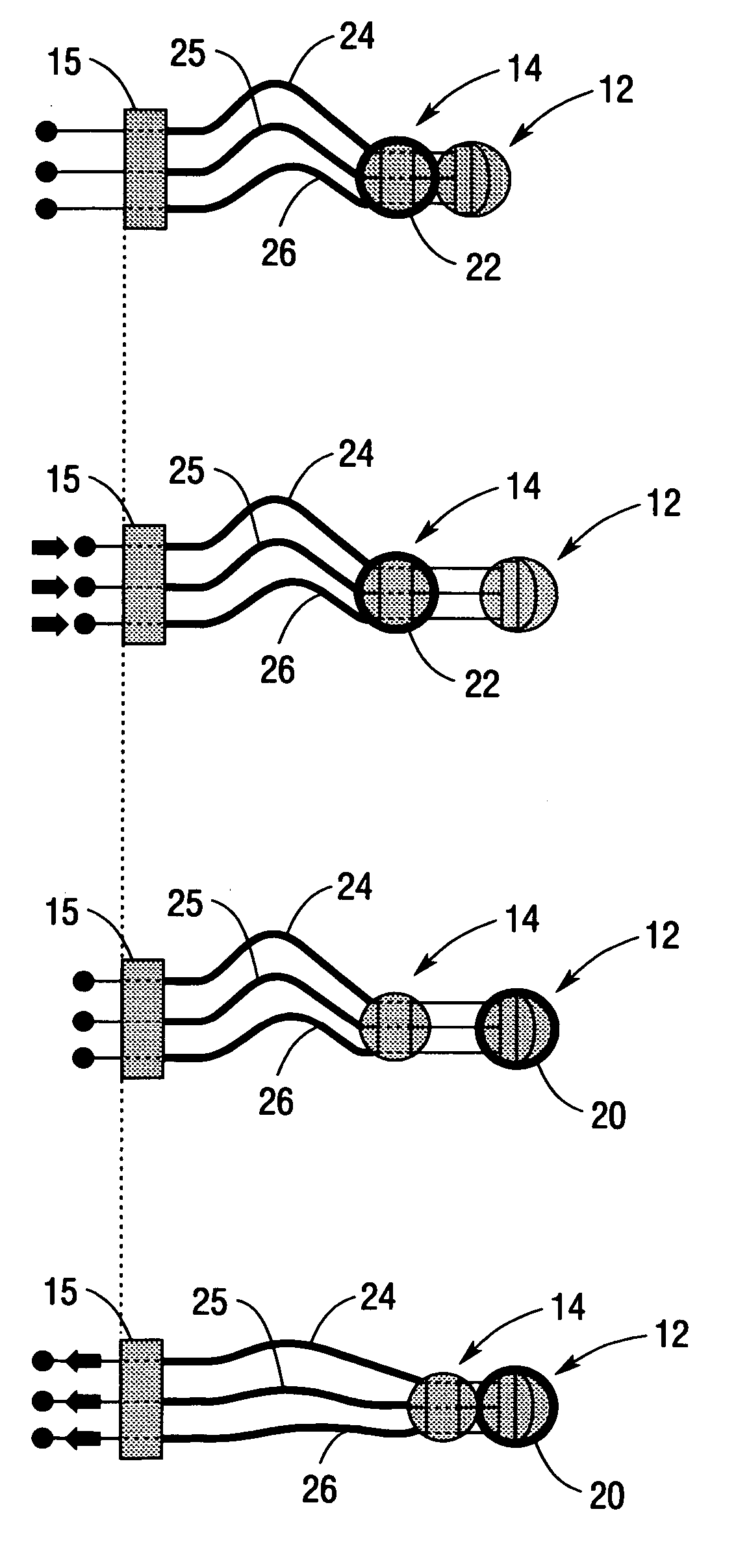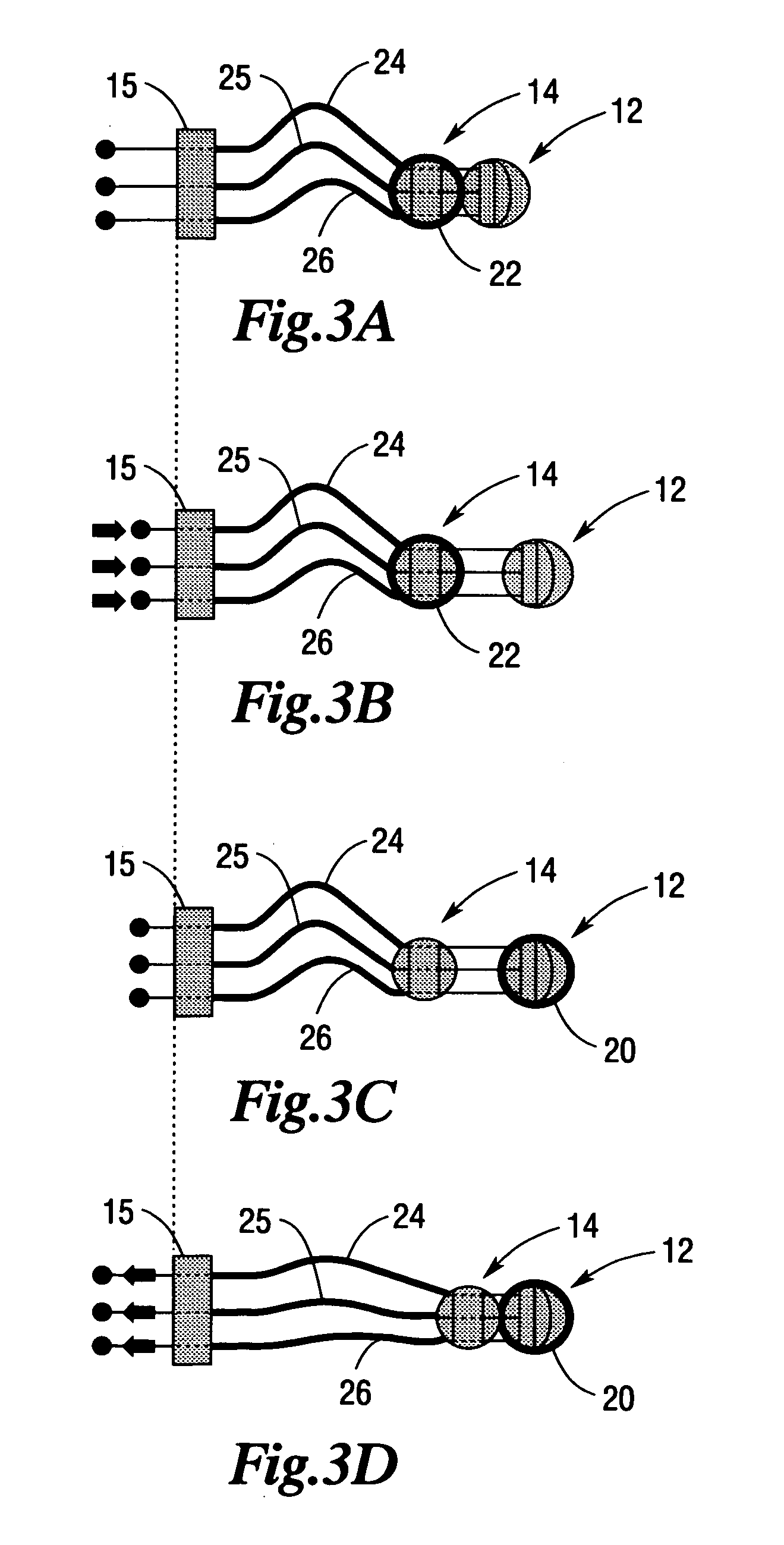Robot for minimally invasive interventions
a robotic and minimally invasive technology, applied in the field of heart surgery, can solve the problems of limited operative field, bulky and expensive, and complicating the challenges of minimally invasive access, and achieve the effects of improving the electrophysiological and hemodynamic performance of the hear
- Summary
- Abstract
- Description
- Claims
- Application Information
AI Technical Summary
Benefits of technology
Problems solved by technology
Method used
Image
Examples
Embodiment Construction
[0022] One embodiment of a robot constructed according to the present disclosure is illustrated in FIGS. 1 and 2. FIGS. 1 and 2 illustrate a prototype device 10 designed and constructed in the Medical Instrumentation Lab at Camegie Mellon University, which will now be described for purposes of illustration and not limitation. The device 10 consists of two glass-filled polycarbonate shells forming a distal body 12 and a proximal body 14, each body having a 13 mm circular footprint and a height of 14 mm. That size allows the device 10 to fit within a standard 20 mm diameter cannula or port. Each of the body sections 12, 14 is equipped with an independent suction line 16, 18 and suction pad 20, 22, respectively, for gripping to biological tissue. The suction lines 16, 18 and suction pads 20, 22 illustrate one type of means for prehension.
[0023] The translation and rotation of the body sections 12, 14 relative to one another are controlled from an external control system, in this embod...
PUM
 Login to View More
Login to View More Abstract
Description
Claims
Application Information
 Login to View More
Login to View More - R&D
- Intellectual Property
- Life Sciences
- Materials
- Tech Scout
- Unparalleled Data Quality
- Higher Quality Content
- 60% Fewer Hallucinations
Browse by: Latest US Patents, China's latest patents, Technical Efficacy Thesaurus, Application Domain, Technology Topic, Popular Technical Reports.
© 2025 PatSnap. All rights reserved.Legal|Privacy policy|Modern Slavery Act Transparency Statement|Sitemap|About US| Contact US: help@patsnap.com



